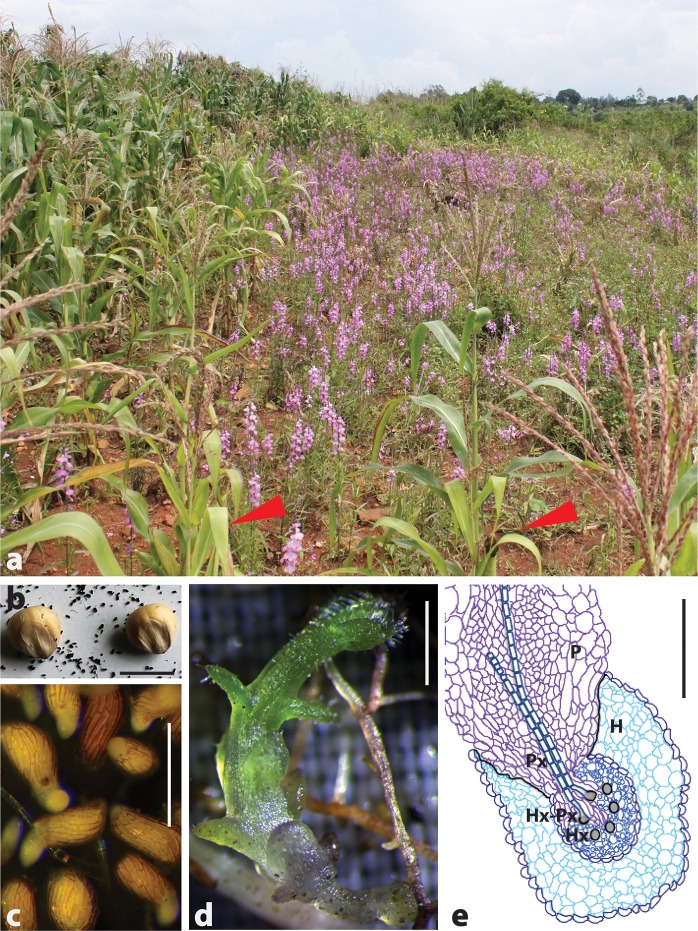Fig 1. Witchweed (Striga) at a glance.
(a) Destructive effect of S. hermonthica at high infestation (right), where Striga has caused complete crop failure, compared with low infestation (left), where some yields can be realized. Other effects of Striga infestation such as chlorosis can be observed on the field in the right (red arrows). This picture was taken in a farmer’s maize field in Gem, Siaya County in Western Kenya. Photo credit Daniel Ajaku (ICRISAT). (b) Striga small seeds in comparison with sorghum. The tiny dust-like seeds can remain dormant in soil for decades. Scale bar = 5 mm. (c) Striga seedlings 12 hours after treating with a germination stimulant (GR24). Striga seeds germinate only in response to chemical cues from the host plant. Scale bar = 0.5 mm. (d) A 10-day–old Striga seedling with a well-developed haustorium attached to a sorghum root. Scale bar = 0.2 mm. (e) A schematic of a section through a 10-day–old Striga seedling showing the parasite (P) attached to a host (H). By this time, the parasite has developed fully. The parasite xylem (Px) has merged with the host xylem (Hx) to form a siphon (Hx-Px) that sucks out nutrients from the host. Scale bar = 0.05 mm. H, host; Hx, host xylem; ICRISAT, International Crops Research Institute for the Semi-Arid Tropics; P, parasite; Px, parasite xylem.

